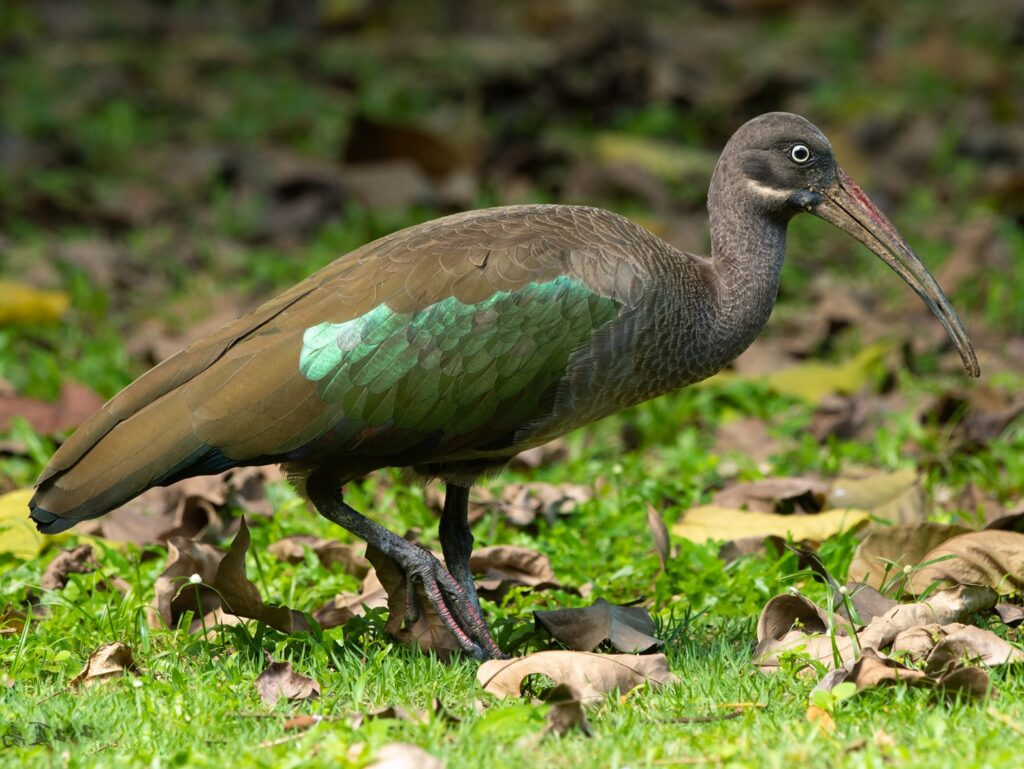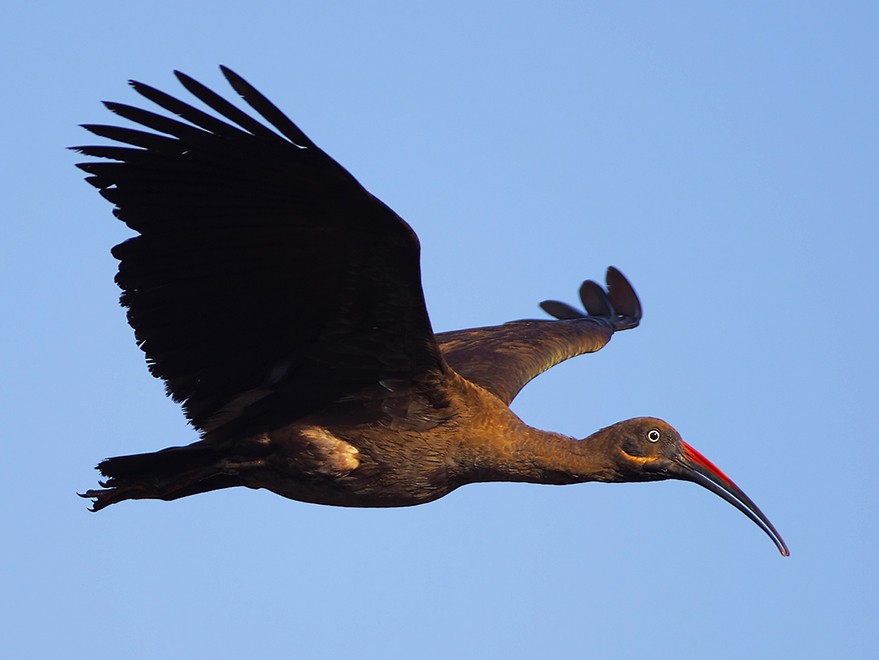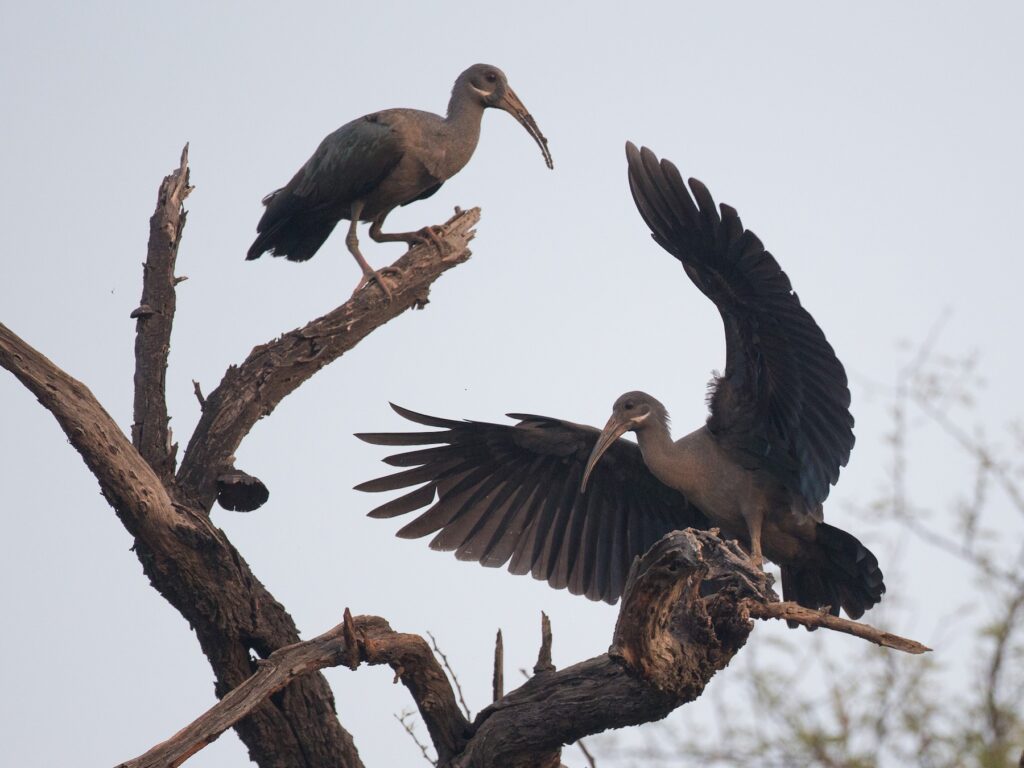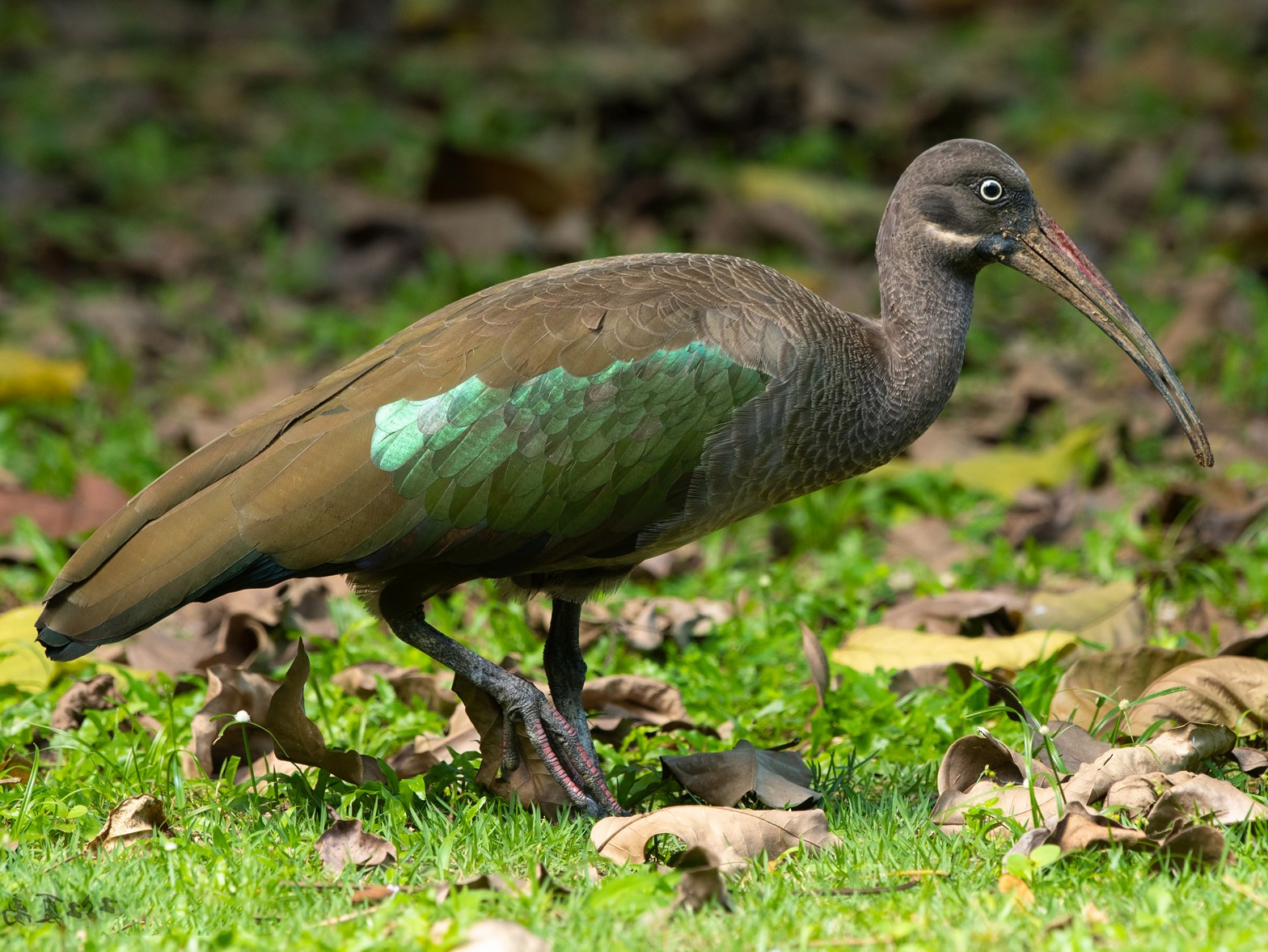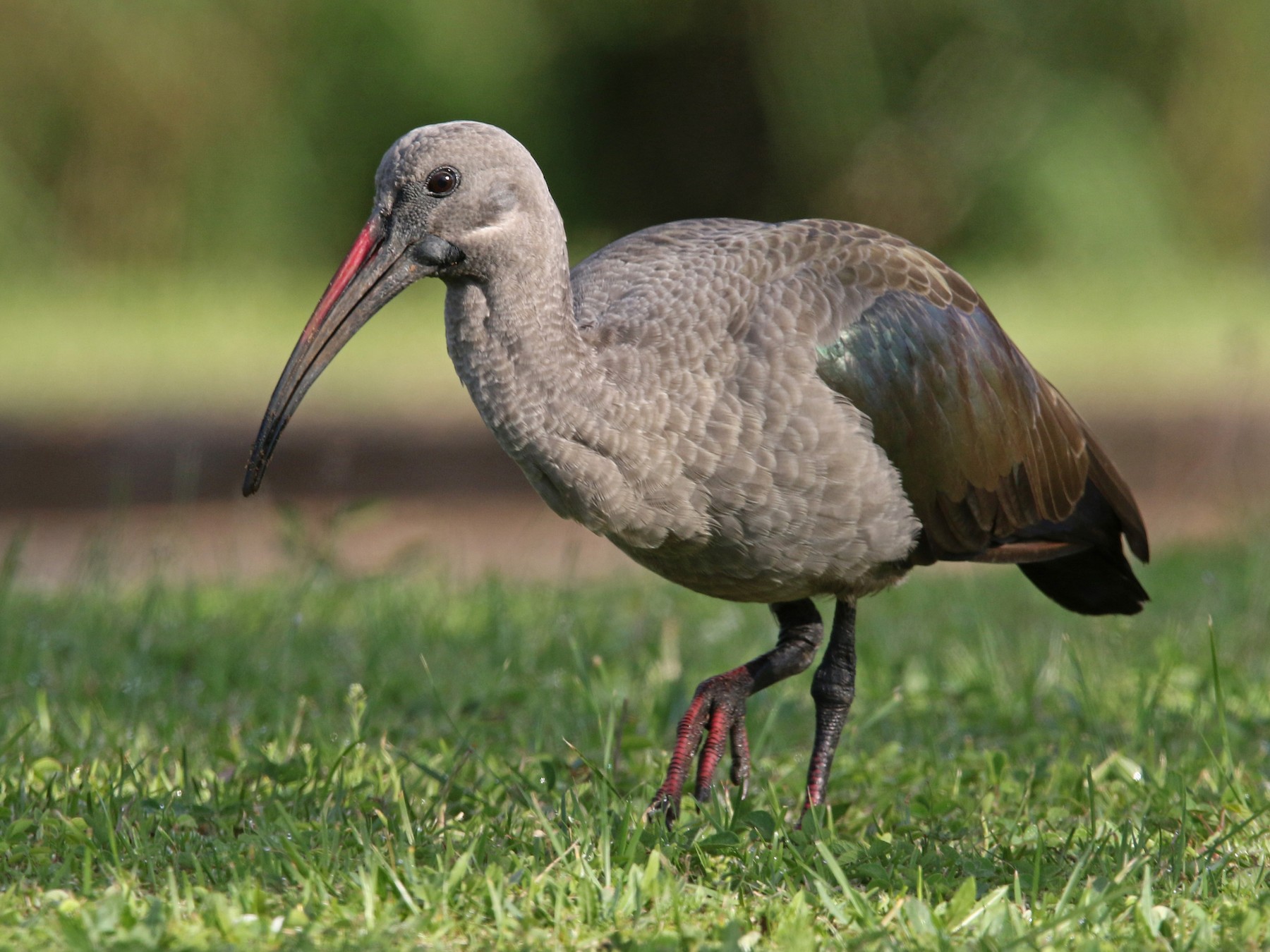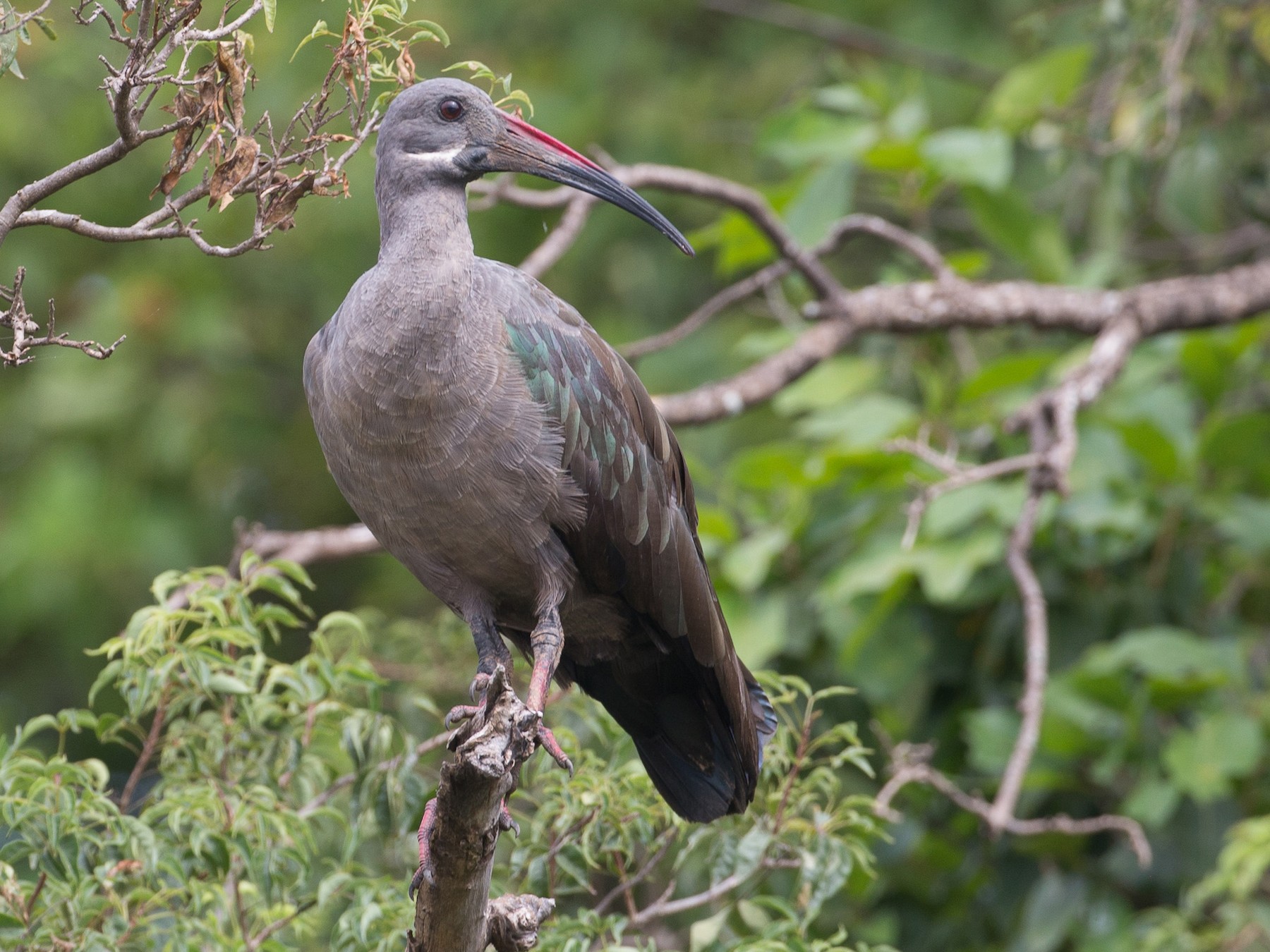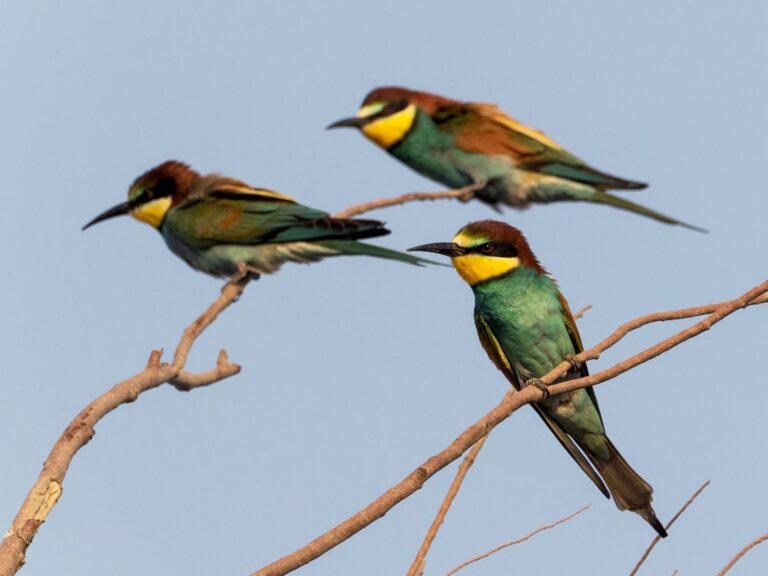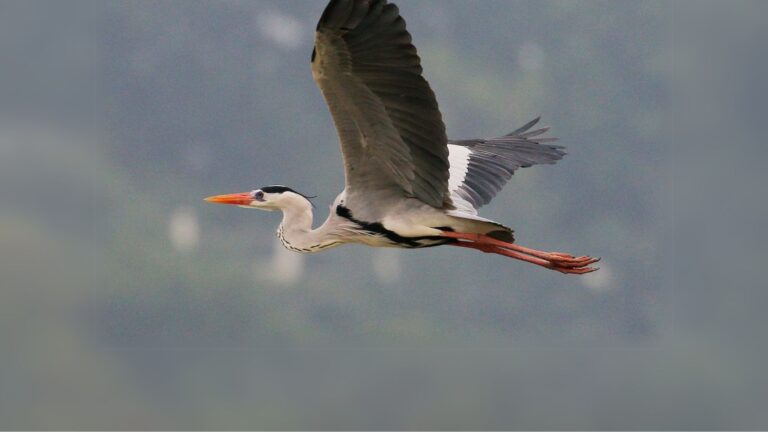Hadada Ibis: A Fascinating Insight into Its Unique Behavior and Habitat
The Hadada Ibis is a wonderful species for both birdwatchers and nature lovers alike; I mean, just look at this bird. This medium-sized ibis shows off with its green and purple feathers and lets out a loud, honking call, kind of like a goose, that echoes across its range.
You’ll find these beautiful birds mostly in wide open forests and savannahs around Africa. And, they’re also a familiar presence in lots of other regions, sometimes even right in city parks or gardens. They love insects as their main diet, but also crustaceans, and small amphibians. They are great foragers because of those long, curved bills that make it easy to dig around.
Key Takeaways
- The Hadada Ibis is known for its colorful feathers and unmistakable honking call.
- It uses its long bill to forage for food in open forests and savannahs.
- Conservation matters, especially with humans changing their habitats more and more.
Taxonomy and Classification
The Hadada Ibis sits within a rather tangled family tree in the bird world. Let’s break down where it fits, what it’s related to, and how it got its name.
Scientific Classification
The Hadada Ibis belongs to the Threskiornithidae family. Its scientific name is Hagedashia hagedash. You’ll find it in the order Ciconiiformes. The genus Bostrychia also includes a few other ibises with shared features.
- Kingdom: Animalia
- Phylum: Chordata
- Class: Aves
- Order: Ciconiiformes
- Family: Threskiornithidae
- Genus: Hagedashia
- Species: Hagedashia hagedash
Related Species
The Hadada Ibis shares its family with other ibises and spoonbills. Some notable relatives:
- Bostrychia olivacea (Green Ibis)
- Eudocimus ruber (Scarlet Ibis)
- Platalea leucorodia (Eurasian Spoonbill)
These birds usually live in similar habitats, showing off the variety among ibises. Wetlands and marshes are their go-to spots for food and shelter.
Naming Origins
The name “Hadada” comes from their unique call—it really does sound like “ha-da-da.” The genus name Hagedashia honors Edward Hargreaves, a naturalist who studied them.
The species name, hagedash, is Dutch, which nods to the bird’s origins. There’s a bit of history and culture wrapped up in those names, all tied to the bird’s habits and its unmistakable voice.
Physical Characteristics
The Hadada Ibis stands out with its looks and its voice. There are a few features and quirks that make it easy to recognize in the wild.
Distinctive Appearance
Its feathers are mostly dark green and brown, with a shimmer when the sun hits just right. The long, slender black bill is probably the first thing you’ll notice—it’s perfect for poking around for food.
The Hadada stands about 60 to 75 centimeters tall, with a wingspan that stretches 100 to 110 centimeters. Those long legs give it a bit of an elegant stride as it moves through grass or shallow water.
Flight and Calls
When it takes off, the Hadada Ibis keeps its neck outstretched and legs trailing behind. Its flight looks powerful and steady. That loud “hadada” call is impossible to miss and is actually how it got its name. These calls matter most during breeding season or when birds gather in groups. Their voices travel far, helping them stay in touch with each other even in big open spaces.
Adaptations
Their long bills are great for digging up insects, crustaceans, and small fish in muddy ground. That’s a handy trait in East Africa’s wetlands. Another odd habit—sunning. Sometimes you’ll see a Hadada standing with wings spread, soaking up sunlight. It’s not just for show; it helps them control body temperature and shake off parasites.
These quirks help them survive in marshes, savannas, and forests. You can dive deeper into their traits at the Hadada Ibis at the Oregon Zoo if you’re curious.
Habitat and Distribution
The Hadada Ibis manages to thrive in all sorts of places throughout sub-Saharan Africa. Where it lives depends a lot on what’s available nearby, especially water.
Geographic Range
You’ll find Hadada Ibises across Tanzania, South Africa, Ethiopia, and more. East Africa is a hotspot, with strong populations in Kenya, Somalia, Senegal, and the Gambia. They show up in both cities and the countryside, often wherever food and nesting spots are easy to find. Their adaptability is impressive, honestly.
Preferred Habitats
Hadada Ibises like wetlands, streams, and marshes best. They’re also comfortable in savannas, where they take advantage of the variety of bugs and critters living there.
Usually, you’ll spot them foraging in mud or shallow water for insects and crustaceans. Even in cities, they can make do if there’s standing water around—it’s not too unusual to see them in a park after a rain.
Migration and Movement
These birds don’t really migrate long distances. But if their local wetland dries up or food gets scarce, they’ll move to a better spot. In places with wet and dry seasons, like much of East Africa, they might relocate to chase the rain and the food it brings. Their movements are usually local, not epic journeys, but it’s enough to keep them going year-round.
Diet and Feeding Behavior
The Hadada Ibis eats a pretty wide range of things, which helps it survive in so many places. Its favorite foods are the little critters hiding in mud and grass.
Primary Diet
Most often, Hadada Ibises dig up worms, insects, and small crustaceans. Wetlands, grasslands, even farm fields—they’ll go wherever the food is.
Sometimes, especially around farms, they munch on seeds and grains too. Being able to switch things up keeps them flexible and resilient. There’s more on their feeding habits in various ecological studies if you’re interested.
Foraging Techniques
They’re pros at using those long, curved bills to probe into soil and mud, pulling out worms and bugs that other birds might miss. It’s a bit like nature’s treasure hunt. They also use their eyes to spot movement in water or grass. Occasionally, you’ll see a group of them foraging together—teamwork seems to help, especially when food is tricky to find. All in all, their feeding style is a big reason they’ve stuck around and thrived in so many places.
Behavior and Ecology
Hadada Ibises show a bunch of interesting behaviors that help them get by. Their social lives, breeding habits, and adaptability are worth a closer look.
Social Structure
They’re social, usually hanging out in small groups or with family. Their calls—honks and grunts—keep everyone in the loop and help warn about danger. Sometimes, younger birds help adults look after chicks. This kind of teamwork strengthens family ties and makes sure more chicks survive. It’s a pretty clever system, especially when dealing with the chaos of urban life.
Breeding and Nesting
Hadada Ibises breed near water, building nests in trees or shrubs close to a pond or stream. They weave together twigs and grass for a sturdy home. Each clutch usually has 2 to 5 eggs. Both parents take turns keeping the eggs warm for about three to four weeks.
Once the chicks hatch, mom and dad feed them insects and small invertebrates. With luck and good parenting, the chicks grow strong enough to leave the nest before too long.
If you want to dig deeper, check out more on breeding behaviors and social traits of Hadada Ibises.
Conservation and Human Interaction
The Hadada Ibis plays a pretty big role in its ecosystem. Still, it faces some real challenges because of what people do. How folks treat these birds can really shape their future. Conservation efforts can tip the balance for better or worse.
Conservation Status
The IUCN Red List puts the Hadada Ibis in the “Least Concern” category. So, extinction isn’t exactly knocking at the door. But let’s be real—habitat loss from farming, cities, and deforestation isn’t doing them any favors. Conservation teams try to keep their numbers up by saving wetlands and open forests.
Some programs push for farming that works for both people and birds. Laws and habitat restoration projects sometimes help the Hadada Ibis stick around.
Interactions With Humans
People’s experiences with the Hadada Ibis really depend on where you are. In certain places, agriculture actually gives these birds new spots to forage. They’ll poke around in fields, eating bugs and maybe doing farmers a favor. But not everyone loves them—some see them as pests, especially if they get a little too comfortable on the farmland.
Awareness campaigns sometimes help folks see the upside of having these birds around. Changing people’s minds about the Hadada Ibis can go a long way for conservation.
Cultural Significance
The Hadada Ibis pops up in local stories and art, thanks to its odd call and looks. Some African cultures even say the bird brings luck or symbolizes fertility. This connection makes people more likely to help out with conservation, at least in some communities.
You’ll also spot the Hadada Ibis in sports logos and team names, which is kind of fun.
Highlighting that cultural side might help rally more folks to care about their survival. It’s not just about the bird—it’s about what it means to people, too.
Frequently Asked Questions
The Hadada Ibis has some quirky habits and traits, and people have questions. Here are some honest answers about what they eat, how they sound, and what sets them apart.
What does the Hadada Ibis typically feed on?
Mostly, these birds go after insects, worms, and tiny crustaceans. They’ll dig through mud and grass, always on the hunt. If they find seeds or berries, they’ll eat those too—guess they’re not too picky when food gets scarce.
What is the significance of the Hadada Ibis’s call?
Their call is loud—really loud—a “haa-haa” sound you can’t miss. They use it to talk to each other, especially during mating or when hanging out in groups. That call travels pretty far, so even if you don’t see them, you’ll probably hear them.
How can one distinguish between a male and female Hadada Ibis?
Honestly, males and females look almost the same. Both have shiny green and purple feathers, but males usually come in a bit bigger. During breeding season, you might catch them acting differently, which can help you tell them apart—but it’s not always obvious.
What are some interesting facts about the Hadada Ibis?
They’ve got some interesting nesting habits. You’ll find their nests in trees or shrubs, built from whatever twigs and reeds they find. They’re surprisingly adaptable, often showing up in city parks or gardens. They don’t seem too bothered by people, honestly.
How does the Hadada Ibis differ from the African Sacred Ibis?
Both birds belong to the same family, but they don’t look or act the same. The Sacred Ibis is bigger, with white feathers and a black head. The Hadada Ibis, on the other hand, shows off darker, more colorful plumage and that unmistakable call. You probably won’t mix them up if you see—or hear—both.
What triggers the Hadada Ibis to vocalize at night?
The Hadada Ibis often calls out at night, and honestly, it’s just part of its normal routine. Mating rituals sometimes set off these noisy calls. Territorial displays can also spark their vocalizations. Their loud sounds help the group stick together and might even scare off threats lurking nearby.

